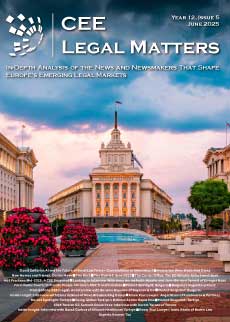The agricultural sector in the European Union is facing an increasing number of legal and regulatory challenges, in contexts which are genuinely multidisciplinary.
The sector has traditionally attracted close political attention at both the EU and national level, and regulatory and policy decisions at both levels have often led to substantial - in some instances drastic - changes to its continued functioning.
The diversity of stakeholders involved in these policy discussions have not led to better decision-making either, as effective sector governance would require meaningful dialogue about difficult policy choices between private farmers and global conglomerates and between civil society organizations and national regulators.
Various laws and policy decisions have triggered an increasing number of questions around policy coherence. The lack of a coherent set of carefully crafted regulations means that any response to a segmented sectoral issue (e.g., whether to keep providing subsidies to increase provincial productivity) inevitably generates other issues (e.g., the potential exhaustion of natural resources).
Each of the following nine objectives the EU has recently set for its ever-evolving Common Agricultural Policy suffer from these problems and thus raises further challenges, with considerable legal and regulatory relevance.
1. Ensuring a Fair Income for Farmers vs. Increasing Competition for Natural Resources: Access to land is limited by the small proportion and high price of land coming onto the market. National legislation in most EU territories, such as the 2013 Hungarian land act, has introduced strict regulatory control over any transfer and leasehold of agricultural land.
2. Increasing Cross-Border Competiveness vs. Transboundary Pests and Diseases: Lack of border control of livestock within the single European market means that plant pests and animal diseases travel across regions fast, which immediately affects the ability of producers and food manufacturers in infected areas to access other markets. Regulatory prevention strategies, however, require national veterinary and plant health service capacities and increase the administrative burden for market players.
3. Rebalancing the Power in the Food Chain vs. Inequality and Insecurity Among Farmers: One of the main economic challenges to farmers is access to markets, particularly concerning bargaining power in the food chain. In December 2018, the European Commission and Council announced its support of proposed legislation against unfair trading practices in the agricultural and food supply chain which would improve the role of farmers in the chain by banning some of the most common unfair trading practices of large, multinational buyers.
4. Climate Change Action vs. Economic Growth: Sustainable use of natural resources has become a hot concept in agriculture too, which unfortunately becomes difficult when trying to increase sectoral output. National regulators and EU lawmakers have ensured that farmers in segments that can most easily reduce their environmental footprint are better subsidized, or even incentivized.
5. Preserving Landscapes and Biodiversity vs. Agricultural Productivity: While the adoption of modern agricultural technology and solutions can drastically increase agricultural productivity, these tools often come under stringent regulatory restrictions, if not prohibitions. The classic example is genetically modified organisms, which are completely prohibited in the Hungarian agricultural sector by the Hungarian Constitution.
6. Environmental Care vs. Food Loss and Waste: The unprecedented demand for food ironically increases food waste, which is estimated at as much as one-third of all food produced for human consumption. Regulators are striving to find solutions to reduce this and to ensure a sustainable and environmentally safe solution.
7. Supporting Generational Renewal vs. Population Growth, Urbanization, and Aging: A particularly painful social challenge for farmers in an aging society such as Hungary’s is inter-generational succession. Ensuring both economic viability and environmental sustainability creates a complex challenge for those senior farmers who cannot bear the costs and may lack the resources for modern management. Therefore, in April 2019 the Hungarian Government proposed to review and renew the relevant national legislation specifically to enable a fair and smooth inter-generational succession of privately-owned agribusinesses.
8. Vibrant Rural Areas vs. Climate Change and Natural Disasters: A relatively new challenge is climate change, which is increasing the risk of floods, droughts, and previously-unknown exotic diseases. Limiting the impact of natural disasters on agriculture is critical, leading the Hungarian Government to launch a national system to prevent damage from hail.
9. Protecting Food Security and Health Quality vs. Changing Food Systems and Innovation: In the EU, the increasingly strict regulatory environment is leading to the reduction of investments into innovative solutions. As a result, businesses in the EU are lagging behind competitors in global markets.
By Janos Toth, Partner, Wolf Theiss, Budapest
This Article was originally published in Issue 6.5 of the CEE Legal Matters Magazine. If you would like to receive a hard copy of the magazine, you can subscribe here.



